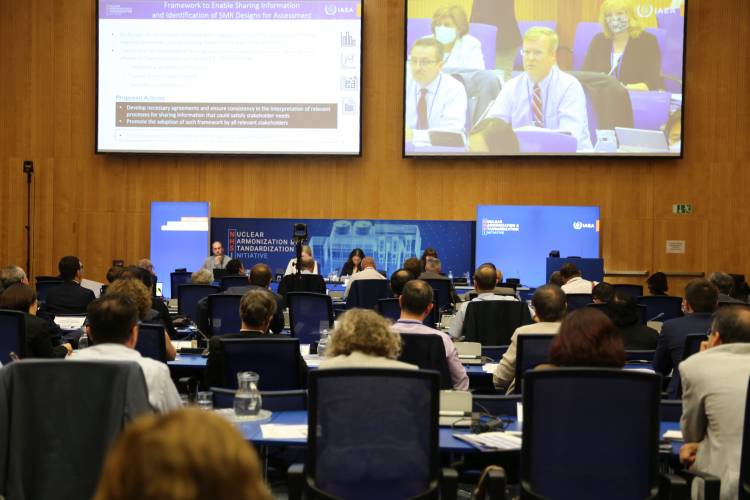The goal of the industry track is to develop more standardized industrial approaches for SMR manufacturing, construction and operations that can reduce licensing timelines, costs and, ultimately, the time to deploy SMRs. The SMR business model is often based on serial production, which means that after the deployment of the first-of-a-kind reactor, cost and time savings materialize under a standardized approach. The industry track focused on four objectives: harmonization of high-level user requirements, information sharing on national standards and codes, experiments and validation of simulation computer codes to model SMRs and accelerating the implementation of a nuclear infrastructure for SMRs.
"User requirements are based on the utilities’ needs and must be consistent with IAEA safety standards,” said Aline des Cloizeaux, Director of the Division of Nuclear Power at the IAEA and chair of the industry track. “There is a general agreement on the need for technology neutral utility requirements, as this will help standardize user specifications and help technology developers to align with the market.” She also stated the need to consider non-electrical applications and non-traditional end users when defining industry standards.
Codes and standards are requirements and rules for the design, construction and operation of structures, systems and components, and they are issued by national and global organizations, such as the International Organization for Standardization (ISO). The challenge with harmonizing codes and standards is that each country may have different requirements. For codes and standards that apply to SMRs, equivalencies among existing requirements will be identified, and the NHSI will collect and share information through a platform that will expand to advanced manufacturing standards and customization for SMRs. Furthermore, the NHSI proposed resource sharing among experimental facilities, technology holders and technical support organizations (TSOs) to validate simulation computer codes to model SMRs, which are used to support the design and safety analysis that regulators review to grant licenses. TSOs provide expertise and services to support nuclear and radiation safety and all related scientific and technical issues.
The IAEA Milestones Approach, which includes 19 steps in the development of nuclear infrastructure – from nuclear safety and security to human resource development and funding – is under revision to include the development of SMRs, and the NHSI will engage with embarking or expanding countries to include scenarios involving different forms of advanced reactors. “The goal is to assist countries considering the development of SMRs in streamlining and accelerating infrastructure development, which could reduce the amount of time from the initial consideration of the nuclear power option to operation,” des Cloizeaux said.
An important area for collaboration between both tracks is the establishment of solutions to facilitate information sharing on particular SMR designs and their safety and security implications. The regulators’ task is to define what is needed in terms of information sharing to be able to work with other regulators. “The solution will come from both industry and governments,” Bradford said. “We need industry feedback and input because industry has a big say in what they are comfortable sharing with regulators to facilitate their international collaboration.”
Through this kick-off meeting, both tracks have “developed ambitious but feasible programmes of work that build on previous activities and that progressively make important steps to help the harmonization and standardization of design and construction and harmonization of regulatory approaches,” Mr Grossi stated. “I strongly believe that the NHSI will be a true game changer.”
The IAEA will host the next NHSI plenary in 2023 to take stock of progress between now and then.








